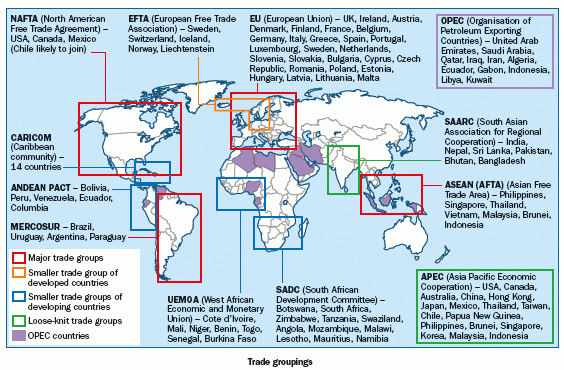Trade alliances
Trade agreements
Towards the end of the 1990s a number of regional trade agreements came into existence. Today there are in excess of one hundred. It is thought that just about every country in the world is involved in at least one agreement. These agreements strengthen the political base of a country, ensure security and can even ensure food security (and fair prices) between neighbours/trading partners through the use of price fixing, quotas and tariffs. Some agreements have even worked to allow countries into the global economy, such as Vietnam whose present day success is due almost exclusively to its entry into the Asian Free Trade Area (ASEAN). For the future it is thought that the EU (with lots of extra Eastern Bloc countries) and the North America Free Trade Agreement (NAFTA), with all of the Americas, will dominate world trade.
The 2009 Doha Trade negotiations had the effect of lowering barriers and increasing global trade. It also effectively broke the stranglehold of agricultural import rules, though the EU amongst others refused to sign up to this part of the negotiations!

The future for world trade
Likely scenarios relating to future world trade are listed below.
- TNCs will continue to dominate trade.
- Older developed nations will face increasing competition from the NICs, RICs and BRICs.
- The disproportion between imports and exports between the LEDCs and MEDCs will remain.
- Raw material trading will increase, as countries run out of resources.
- Trade will grow between the less developed nations.
- It is likely that the WTO will aid developing nations by helping with trade reform, to settle disputes and by promoting clear trade regimes and reforms.
